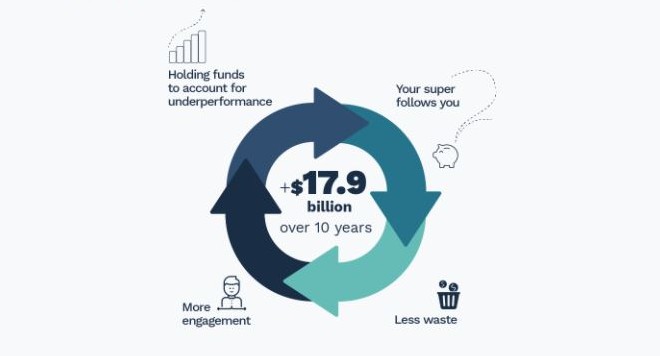
Mr Frydenberg, in his Budget speech, said the new round of reforms was introduced because the current system was “letting too many Australians down”, particularly when it came to fees.
“Australians are paying $30 billion per year in superannuation fees,” he said.
“This is more than the $27 billion Australian households pay on their energy bills or the $12 billion they spend on water bills. By 2034, it is estimated that Australians could be paying $45 billion in superannuation fees.”
The superannuation system changes announced in yesterday’s Budget 2020-21 are part of an ongoing process of reform, sparked by an Productivity Commission report that was handed down last year. Previous changes included moves to reduce the number of people who held multiple super accounts, and who were therefore needlessly paying duplicate fees.
At present, most employees in Australia can choose which superannuation fund they want their retirement savings to be paid into, although many end up going with a superannuation fund that is chosen for them by their employer. These are called “default super funds” and include the MySuper funds (basic super products with low fees). However, the reforms announced last night, if enacted, will change the way an employer acts when hiring a new employee. Under the reforms:
1) An employer must find out from the Australian Taxation Office (ATO) if a new employee has an existing super fund. Employers will be required to make payments to that account if the employee does not notify them otherwise.
2) Alternatively, a new employee can notify their employer of their preferred fund (using the Standard Choice Form).
3) If the new employee doesn’t have an account, and does not let their new employer know which fund they have chosen, only then will the employer be allowed to create, on the new employee’s behalf, an account with its nominated default superannuation fund.
“Your super will be ‘stapled’ to you, so that you keep your current super fund when you change jobs,” a Treasury fact sheet about the Budget reforms states.

Other reforms in the package include a requirement for super fund administrators to provide more information about their investment decisions and how they were “in the best financial interests of members”.
“Trustees will provide members with key information regarding how they manage and spend their money in advance of Annual Members’ Meetings,” the fact sheet states.
Added to this, superannuation products will face an annual performance test, the results of which will be made public on a government website.
“Funds that fail two consecutive annual underperformance tests will not be permitted to accept new members,” the fact sheet states.
Canstar finance expert Steve Mickenbecker said it was an “extraordinary” move that the government would require funds to write to members and confess that they were underperforming.
“There are some consistently underperforming funds that are costing their members dearly and could result in those members having a lower standard of living in retirement,” Mr Mickenbecker said.
“It is ‘naming and shaming’, but the funds have to name and shame themselves.”
He said the Australian Prudential Regulation Authority (APRA)’s Heatmap was a previous government attempt to alert consumers to the underperformance of certain MySuper funds.
“One could wonder if the Heatmap has become visible enough with superannuation holders,” he said.
“However, the self-reporting of underperformance by the funds themselves can hardly be overlooked by membership, and will be a clear call to action.
“Canstar has been rating superannuation funds for more than 10 years, incorporating investment performance, fees, insurance cover and other product features, and is fully aware of the very wide variance in retirement outcomes amongst funds.
“It’s critical that superannuation holders do become aware of those differences, particularly when a fund is underperforming, and that they take action to remedy their position before it’s too late.”
The new testing regime will begin with MySuper products by 1 July next year, expanding to all super products by 1 July, 2022. The government’s website would be called YourSuper, the fact sheet states, and would rank MySuper products by fees and investment returns. It will also “show your current super accounts and prompt you to consider consolidating accounts if you have more than one”, according to the fact sheet.
“Selecting a well-performing product rather than an underperforming one can significantly boost members’ retirement incomes,” the fact sheet states.
“[For example], a typical young Australian entering the workforce in their 20s could be around $87,000 better off at retirement.
“A typical Australian already in the workforce at age 50 could be around $60,000 better off at retirement.
“The measure will result in $3.3 billion in higher member balances over a decade.”
Follow Canstar on Facebook and Twitter for regular financial updates.
Thanks for visiting Canstar, Australia’s biggest financial comparison site*
→ Looking to find a better deal? Compare car insurance, car loans, health insurance, credit cards, life insurance, as well as home loans, with Canstar. You can also check your credit score for free.







Share this article